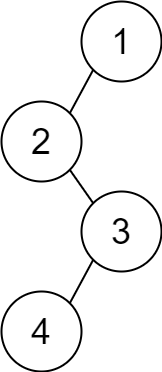LeetCode in Kotlin
2196. Create Binary Tree From Descriptions
Medium
You are given a 2D integer array descriptions where descriptions[i] = [parenti, childi, isLefti] indicates that parenti is the parent of childi in a binary tree of unique values. Furthermore,
- If
isLefti == 1, thenchildiis the left child ofparenti. - If
isLefti == 0, thenchildiis the right child ofparenti.
Construct the binary tree described by descriptions and return its root.
The test cases will be generated such that the binary tree is valid.
Example 1:

Input: descriptions = [[20,15,1],[20,17,0],[50,20,1],[50,80,0],[80,19,1]]
Output: [50,20,80,15,17,19]
Explanation: The root node is the node with value 50 since it has no parent.
The resulting binary tree is shown in the diagram.
Example 2:

Input: descriptions = [[1,2,1],[2,3,0],[3,4,1]]
Output: [1,2,null,null,3,4]
Explanation: The root node is the node with value 1 since it has no parent.
The resulting binary tree is shown in the diagram.
Constraints:
1 <= descriptions.length <= 104descriptions[i].length == 31 <= parenti, childi <= 1050 <= isLefti <= 1- The binary tree described by
descriptionsis valid.
Solution
import com_github_leetcode.TreeNode
/*
* Example:
* var ti = TreeNode(5)
* var v = ti.`val`
* Definition for a binary tree node.
* class TreeNode(var `val`: Int) {
* var left: TreeNode? = null
* var right: TreeNode? = null
* }
*/
class Solution {
fun createBinaryTree(descriptions: Array<IntArray>): TreeNode? {
val map: MutableMap<Int, Data> = HashMap()
for (description in descriptions) {
var data = map[description[0]]
if (data == null) {
data = Data()
data.node = TreeNode(description[0])
data.isHead = true
map[description[0]] = data
}
var childData = map[description[1]]
if (childData == null) {
childData = Data()
childData.node = TreeNode(description[1])
map[childData.node!!.`val`] = childData
}
childData.isHead = false
if (description[2] == 1) {
data.node!!.left = childData.node
} else {
data.node!!.right = childData.node
}
}
for ((_, value) in map) {
if (value.isHead) {
return value.node
}
}
return null
}
private class Data {
var node: TreeNode? = null
var isHead = false
}
}

